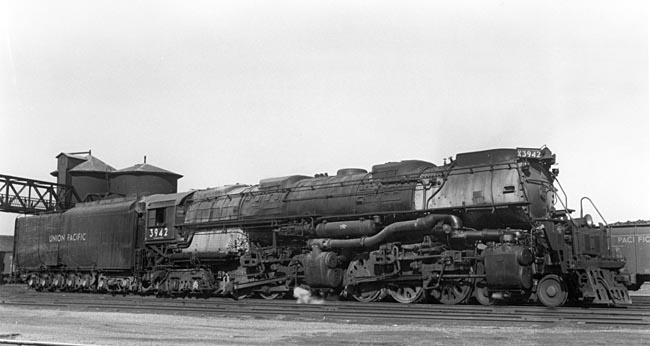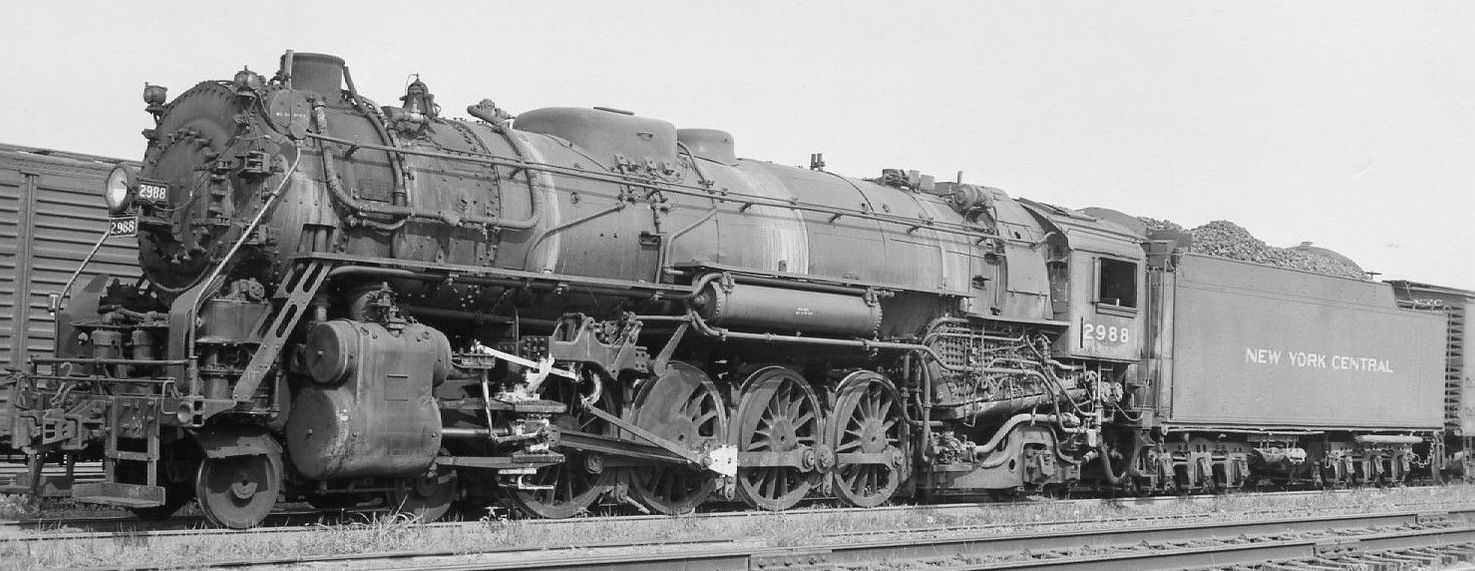NAME AT LEAST FOUR OF YOUR FAVORITE STEAM LOCOMOTIVES.
We’ve done this before, but here goes.
-
Rutland 4-8-2’ s
-
N&W 4-8-0’ s
-
CP 4-4-4 Jubilees
-
N&W last 0-8-0’ s
In a Harry Turtledove-style alternate history of the Rutland, I would put numbers 2 and 3 on the roster. Of course, I would add electrics as well
[:D] I could add D&H had the handsomest 4-6-6-4’ s.
Some “new” candidates added on my list recently:
- C&NW Class H-1 (4-8-4)
- Southern Pacific SP-1 (4-10-2)
- Southern Pacific GS-6 (4-8-4)
- Northern Pacific A-4 (4-8-4)
- B&M Class R (4-8-2)
[C]
1- Pennsylvania Railroad T1 (unmodified front end version)
2- Milwaukee Road A class 4-4-2 atlantic
3- N&W Y6 class
4- Pennsylvania Railroad Q2 class
As an exile from New England. I’ll take the B&M 4-8-2. Atlantics sound good, too. The Strasburg used to operate one.
Rutland’s 4-6-2’s were nice looking. I’m partial to SP’s P class pacifics. CV’s 700-class Texas types, though small by Texas type standards, looked mighty tough…
I like the design of B&M’s smoke deflector on their 4-6-2s and 4-8-2s. I think the Central Vermont 2-10-4 T-3a was good looking too, the Elesco bundle type feedwater heater and the headlight which was installed slightly above the middle of the smokebox door looked attractive. I also like the design of the trailing truck of them and the metal cover (edit: the loco frame) between the firebox and the trailing truck!
You do realize that (unless I am badly mistaken) that is not a ‘metal cover’; that is the actual locomotive frame. (See the surviving CN Hudsons for another view of the same thing.) IIRC the initial C&NW H engines were built this way, and I believe famously rebuilt not to have the relatively weak perimeter frame when they received cast beds later.
This is another example of the sort of ‘clever thinking’ in the '20s that brought us three-cylinder simple power and very high operating pressures.
I know D&H had some high pressure 2-8-0’ s and one 4-8-0. I believe this happened under the famous Loree. I like the D&H because it was a hometown road of my late wife in PA. She wasn’t a railfan, but her dad mined the anthracite that powered the steamers. D&H tapped into Western Vermont; the line leading into Rutland now brings Amtrak to that city.
Wouldn’t most of you experts agree that the high pressure experiments and 3 cylinder power were noble ideas that at best had mixed results? Kind of like the turbines in the 50’ s?
I only heard about them just a few hours ago when I saw rcdrye’s post, Mr. Overmod. I saw some pics of them from brass train dot com and found them really good looking. I thought it was some sort of safety measure. But thank you for telling me that it is actually the loco frame. No wonder it is supported by the centering rockers and such a unique design made them even more interesting to me. [8)]
Purely for aesthetic reasons.
N&W V1:

M1:

Y6b:

U.P. 4-6-6-4:

and the mighty hudson:

OK, in no particular order of importance, or whether alive or extinct.
-
Norfolk & Western Class J, my “Mighty 611”
-
Central of New Jersey Pacific Class G-3s #831, “The Blue Comet”
-
Erie K1 Pacific, any number in the class.
-
David Kloke’s “Leviathan.” I love those 19th Century 4-4-0’s, like pieces of fine art!
D&H had 4 high pressure experimentals, 1400 a two cylinder compound 2-8-0 with 350 psi, 1401 a two cylinder compound 2-8-0 with 400 psi, 1402 a two cylinder compound 2-8-0 with 500 psi and the 1403 a four cylinder triple expansion compound 4-8-0 with 500 psi. The 1400 and 1401 were spectacularly ugly engines, the 1402 and 1403 looked like big bruisers.
The problem with the high pressure experimentals was that “a machine shop had to be sent out with every run”. The 1403 was the most efficient steam locomotive made in the US with pistons.
The story on these engines ran in the June 1967 issue of Trains (first issue I bought).
Yes, Erik, I well remember that article about the D&H high pressure locomotives. As you remarked, two of them were not sleek engines–I imagine that Mr. Loree was not interested in an engine beauty contest, but in making the best use of the coal and water.
Leonor Loree was a great railroader, but unfortunately for the D&H, and himself, he stayed on the job too long, and became hopelessly conservative, at least as far as motive power was concerned.
When he finally left the D&H in 1938 look what came after. The magnificent Challengers and Northerns that turned the D&H from not only a coal drag outfit but into a very efficient money making bridge line.
Hey, personal experience here. When I saw the company I worked for moving into areas I couldn’t understand and just couldn’t get my head around I knew it was time to move on before I made a fool of myself.
For classic non-articulated power Virginian’s MB Mikes and PA Pacifics were very nice.
The Soo/WC N-20 4-8-2 (all but 4 were WC) looked good on the head of a train of maroon cars.
Thanks, rcdrye! it is interesting to me to learn about these handsome steam engines of Soo Line Railroad. I like their N-20 and O-20 equally. [:)]
New York Central L2d

I have a strong liking for the capable UP 4-12-2 “Union Pacific”. For an early steamer, compared to many being offered as favourites by others that are clearly modern and ‘super-power’ examples with the benefit of later learning in steam development, that locomotive was a beast.
I am also keen on the 4-8-4 “Mountain” variants in general, but the S1b Niagara is my all-time favourite. Close behind is the J.
I am fond of the C&O-derivation of their T-1 2-10-4, but the Penny’s version of it, the J1a. Those two cylinders produced nearly as much tractive effort, with the smaller engine, as that generated by the UP Challengers with four cylinders and all their weight.
For true super-power, though, my ardour rests with the Q2, followed closely by the C&O’s Allegheny H-8. For brutish looks, the nod goes to the Allegheny, but the flag goes to the Q2 for the modern look, raw power, and general capability at speed.